We had been trying to get out of the hotel for weeks, and finally, an opportunity presented itself. We were going to Matanzas, a town in the countryside of Cuba. It was the center of the slave trade in the time of its existence and in keeping with the trend of that trade, it created some of the most intriguing musical and cultural styles of the area. It is also completely untouched by tourism and it came highly recommended to us by our teachers at la ENA when asked if such a place existed. We planned to take the ferry from one side of the bay in the back of Habana Vieja (Old Havana) to Casablanca, where we would achieve one of our other main goals of our stay in Cuba.
Choosing Mantazas gave us the opportunity to utilize the Hershey electric train, the train used by Milton Hershey himself to transport his workers throughout his sugar plantations. Cuba was a major component of the Pennsylvania based company, and the train from Casablanca to Mantanzas was fundamental in that development. The train, and its original tracks still exist today, stopping at all sorts of eccentric places along the way, winding through the countryside to its end in Matanzas.
Once there, we would stay at a Casa Particular since there are no hotels or hostels in Matanzas. Some Cubans are authorized by the government to rent out their rooms to foreigners on a night-by-night basis, providing beds, food, booze, or whatever other commodities the travelers may desire. This is the method we used during our stay at the beach and the girls used during their stay in Vinales. We would spend the night seeing the sights, finding music, and simply figuring out what else this place might have to offer. We’d catch a bus back on Sunday and be back in time for class on Monday.
The plan was fool proof.
* * *
Saturday Morning
6:30
There was no chance we were going to make the train. Coury and Paul barely woke up in time and there was no sign of the girls. It was a nice thought. I was willing to concede to some eggs from the hotel bar and go back to bed.
7:15
Miraculous rally from the troops, onwards to the ferry.
7:20
I saw a midget riding a bike on the way to the ferry. Hilarious.
8:00
We made it to Casablanca. There was an intriguing building with an enormous ball at its peak sitting high up on the hill, and with some time to spare before for the train left, we journeyed upwards to find the ball. The journey proved to be a fruitless one.
8:30
Movement on the train. Even if you didn’t know that this train and accompanying tracks were built in 1915, you might’ve guessed it anyway. The tracks had many severe undulations and unexpected dips that rocked us in our seats as it wove its way through the countryside, making it difficult to steal a few minutes of sleep before the long day ahead.
11:15
Just before we left, we found out that this train would not be going all the way to Matanzas due to recent tornado damage to the tracks along the Bahia de Matanzas (Matanzas Bay). Instead, the end of the line was in Casasi, a campo town in the middle of farm country with no bus station and few cars. For that matter, there is very little indication that Canasi existed in the modern time period at all.
We were then blessed with the magical Cuban grace that has shone its beautiful light on us more than a handful of times during our time here. On the train, Edgar approached us: an off-duty conductor from Santa Cruz (Cuba, not California) who was riding the train on his way to Matanzas. He, like many Cubans, was immediately infatuated with our American-ness, and wanted to know who our favorite baseball players were and if we knew of several Cubans playing in the majors, which we did. In true Cuban form, he proceeded to sacrifice his entire day to help us out, effectively becoming our private tour guide.
He spoke at great length when we went by the old Hershey factory, the only indication of industry I’d seen in about three hours. Though my Spanish is good, much of what he said was lost on me due to his enthusiasm and abrasive country dialect. He pointed out several places along the way that Cubans launch rafts from, sneaking their way to Miami, risking great penalty for a new life.
He also told us that the train kills at least one cow every day as they wander onto the tracks eating the grass that grows among them.
* * *
Saturday Afternoon
12:30 PM
Though there was no bus station in Canasi, Edgar told us that a major highway was reasonably close to the train stop. [It is worth noting at this time that a stop on this train line consists of a 6×6 shack, sometimes with a roof on it, and a forged footpath that leads to essentially nothing.] Once we got to the highway, we would be able to hitchhike our way onto a bus and pay in Cuban pesos for a trip to Matanzas, costing us about 30 cents each. We walked for about a mile though the town of Canasi, by the local school, along fences that unsuccessfully contained the animals that lived within, and found our way to the highway. Edgar did his best to flag down the few buses that passed alongside other locals doing the same thing, to a greater level of success. Because once the bus drivers saw five white people behind Edgar, we were all turned down. This is a bus meant for Cubans, and that is no informal matter. Only certain people are authorized to help foreigners, and those that help us who aren’t authorized were subject to great consequence. This is why Edgar’s involvement with us was so remarkable considering the risk he was taking if a police officer saw him. These officers essentially are the law on the streets. But even still, Edgar was merely one among many who had done the same thing.
Admitting defeat, Coury flagged down a Transtur van, a company that is authorized to deal with tourists, and would thusly charge us an absurd amount for the trip. We agreed on 6 pesos a person (a long way from 30 cents) and piled into the cushy, air-conditioned van. The driver chose American Top 40 hosted by Ryan Seacrest (probably a feed from Miami) for our descent into the Matanzas Valley.
1:20
We’d finally arrived in Matanzas. Now, all we needed to do was drop off our things at one of the Casa Particulares and we’d be able to dig into the mystery of this place.
Edgar dug into his large, worn, jean pockets and pulled out what looked like a torn plastic bag. He unwrapped it and sorted out a mess of pesos, ripped pieces of paper with scribbled phone numbers, and business cards. He finally found the number of a Casa that we could use. He called it from a public phone, and away we ventured. We walked through the tight streets and eventually happened upon a small sign on the side of a building that read, “Casa Particular, Solamente Extranjeros” (“Foreigners Only”).
We rang the bell, and climbed the stairs up to the top floor. We were welcomed warmly and lead to a back room that reminded me of the rooms in my Nana’s house in Waltham, Massachusetts. It was a bright room with the beds neatly made, and comforters containing three-dimensional patterns accentuated by little poofy balls. The room smelled nice but contained the faint yet unmistakable aroma of old people. I loved it and was excited to call it home for a night. Our host informed us that only two of us would be allowed to stay here and he could help place us in other houses close by to accommodate everyone. Everything was finally falling into place for us, and I would be able to feel at least distantly at home. All he needed now was to see our passports.
Passports. Dammit!
Apparently, it is illegal to host foreigners without first seeing their passports. And like most Cubans, our host was wholly unwilling to test the authorities. All of us except Trisha had our passports safely locked in the safes at the hotel in Havana. Again, in true Cuban form, he immediately phoned several of his friends who ran a more lax operation to see if they’d take us in, but the calls were futile. No one was willing to undermine the law, and understandably so. The law enforcement in Cuba is swift, harsh, and ever-present, and accounts for the extremely low level of crime in the entire country. And certainly, no Cuban is willing to roll the dice on five passport-less Americans.
This was a potentially serious blow to the trip. We were now 200 miles from Havana, completely exhausted, hungry, and unable to stay the night in Matanzas. We guessed that we had about five hours to do whatever we pleased until the last bus left. We made our way to the station and confirmed our assumption so we checked our bags and made our way to the highest point in the city to get something to eat and drown our sorrows.
2:24
And we did. We ordered some drinks, some fried chicken, and our beloved arroz congris (rice and beans). We ate from a high vantage point where we could see down into the valley and the tracks of the Hershey train that we were unable to travel along. While I felt like all we had done was roll with punches and deal with logistical failures on the run, I found myself in a moment of peace. This vantage point offered an interesting perspective.
To that point in the day, I’d seen much of Casablanca, a poor town that no tourist would ever find cultural or aesthetic value in. Instead, it is a town where real Cubans live in real squalor that is mostly hidden in the museums and restored buildings of Havana. I got an extended, ever-changing look at the countryside on the train, through rolling hills of deep green and enormous naturally growing palm trees that remain untouched by humanity. I had walked through the campos of Canasi, where goats, cows, and Cubans all share the same streets. And finally, I had descended and ascended into the Mantazas valley where I could reach a moment of extreme clarity that I had been looking for this entire trip. After Christopher Columbus arrived in Cuba, he called it the most beautiful place in the world – and he should know. This place is truly a gem of our planet and it is not hard to see why a man who discovered an entirely New World would have something so hyperbolic to say about this small island in the Caribbean.
* * *
3:10
We had about 3 hours until the bus left so we took an old Ford to the center square in town and set off on foot. It didn’t take us long to find what we were looking for. About two blocks away from the square, we heard music playing. Edgar led the way, following his ears. We entered into a large courtyard of a house crowded with people. We all grabbed a Bruja (a local beer) and found a place to stand near the back of the yard to observe the festivities.
What we saw has many names, but the one I found to be the most accurate was Musica de Campismo (‘Music of the Country’). This campismo living is what defines Matanzas. Once a major port for the slaves, Matanzas created and cultivated several types of Cuban music that remains today as uniquely Cuban, much the same way jazz and blues does in the United States. The highest level of cultural and musical identity that both the US and in Cuba have achieved, emerged from the darkest chapters in their history. The displacement of Africans to various parts of the New World isolated them from their true African traditions. And as a result of their oppression here, they were forced to create new forms of musical tradition that reflected and evolved around that oppression. In the US, the slaves created shouts and hollers in an effort to ease the burden of their day-to-day hardships in the fields. This musical form would eventually form the blues, jazz, rock and roll, and beyond.
I was reminded of this evolution while observing the Campismo music. In the style that we saw, the only instruments were guitar and a sort of double mandolin. The mandolin was the primarily soloist while the guitarist maintained a steady I, IV, V progression throughout. There were two singers who took turns creating improvisational rhymes and melodies, arguing and battling each other in a manner that is not so far removed from the freestyle mc-ing in the streets of New York. And while their rhymes were less vulgar, their pants less baggy, and their intentions less gangsta, the premise remained the same: try to out-rhyme and out-battle your opponent.
The reactions from the crowd also contributed to the spirit of the music. One of the men, who maintained a solid chain smoke throughout the show, got more of a strong, classy applause from the crowd. The other man, who looked like the Cuban James Taylor, garnered frequent laughter from the crowd with his rhymes. We were there for about half an hour while this was going on, and who knows how long they had been battling before then. But once it came to a close, the men embraced to a strong ovation from the audience.
We finished our drinks and continued to beat the clock.
4:00
We made a quick stop by the town bell that used to wake up the slaves in the morning, and sent them back to their barracks in the evening. A few pictures were taken, then a moment of silence, then movement to the next stop. From there, we continued a few blocks more to a Santeria museum. We’d learned a great deal about Santeria in our culture class and we had already been to the foremost authority of Santeria in the town of Guanabacoa, where it is actively practiced. [I will differ to the words of Michael Patton for a summation of our trip to Guanabacoa: ‘Dude, weak.’] Unwilling to pay the entrance fee or waste any more time, I bought a sweet hat with a serpent on it and moved on.
We then set out to accomplish one our other main goals of the trip: finding Rumba. This is another contribution of the slaves that survives today intact, as it was in their time. Rumba is a style of music solely comprised of Afro-Cuban drumming as it is now called. It’s composed of three parts: Yambu, Columbia, and Guaguanco. The Yambu is a slower dance that older people generally dance to. The dance moves are slow and deliberate as it reacts to the music. The Columbia picks up the pace from there. This is a dance that only features males and involves extremely acrobatic movements. It ends with the Guaguanco, anchored by the 2/3 clave and drums called ‘cajones.’ The women in this dance remain in the periphery, teasing and beckoning the men. But when courted, they act shy and cover themselves.
Our friend Phil, currently studying in Santiago, recommended the Casa de la Cultura Municipal Bonifacio Bryne, a sort of community center that puts on free events for the townspeople. Edgar confirmed this recommendation so onwards we pressed. But once we arrived, the ongoing trend of foiled forward planning continued. We were informed that ‘there was no event tonight, but if we wanted to come back tomorrow’. Bollacks.
5:00
Thwarted again, we did what anyone would do when they’re feeling useless: seek out some ice cream. But yet again, as we closed in on the Coppelia, the best ice cream in Cuba, an outrageous line of Cubans with the same idea ended that thought. Defeated, we went next door to the train station to see if one of the individually scheduled tourist buses would be leaving for Havana any earlier than the listed 6:50 departure. There wasn’t one, so we sat down for the first time in hours, watched some Charlie Brown in Spanish while some of us fell asleep.
But galvanized by the group, and not willing to concede the remaining time, we did the most Cuban thing we could: arm ourselves with rum juice boxes and sit by the water. There we were able to settle our thoughts to the accompaniment of another incredible Cuban sunset. Here, we were glad there was not another bus out of Matanzas.
6:50
After thanking Edgar and awarding him with the few Cuban cigars we had on us, we boarded a bus that came from Varadero, full of Asians, bound for Havana. They were watching ‘Blade: Trinity’ with Spanish overdubs, which seemed odd to me in more than one way. However, it proved an inconsequential detail as I slept soundly the whole ride back.
9:30
In our first stroke of luck of the day, we were able to catch a taxi immediately and made it back in time for the free Hotel Kohly buffet.
* * *
Sunday Morning
12:30
Sleep came easily and lasted until the afternoon.

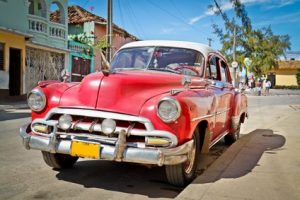
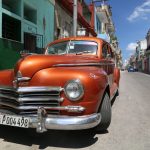
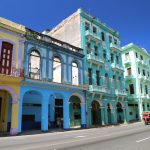
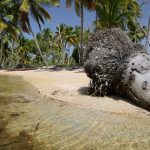
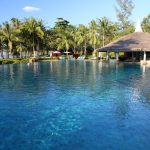
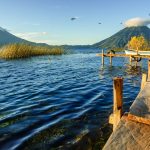
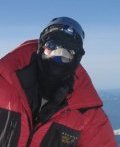
Leave a Reply